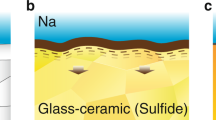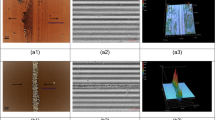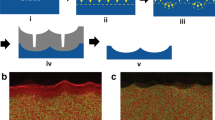Abstract
IT is generally known that fission tracks intersecting the surface of man-made soda–lime–silica glasses can be etched with HF at room temperature1,2. In this technique the acid attacks the tracks preferentially so that they become visible in the microscope before the glass itself is destroyed. An NaOH etch at 60° C has been reported for phosphate glasses3.
This is a preview of subscription content, access via your institution
Access options
Subscribe to this journal
Receive 51 print issues and online access
$199.00 per year
only $3.90 per issue
Buy this article
- Purchase on SpringerLink
- Instant access to full article PDF
Prices may be subject to local taxes which are calculated during checkout
Similar content being viewed by others
References
Fleischer, R. L., Price, P. B., and Walker, R. M., A. Rev. Nucl. Sci., 15, 1 (1965).
Fleischer, R. L., Price, P. B., and Walker, R. M., Science, N.Y., 149, 383 (1965).
Becker, K., Health Phys., 12, 769 (1966).
Davison, Claire C., thesis, Univ. California (Lawrence Berkeley Laboratory Report No. LBL 1240, 1972).
Author information
Authors and Affiliations
Rights and permissions
About this article
Cite this article
DAVISON, C. NaOH Etch of Fission Tracks in a Soda-Lime-Silica Glass. Nature 247, 103 (1974). https://doi.org/10.1038/247103a0
Received:
Issue date:
DOI: https://doi.org/10.1038/247103a0



